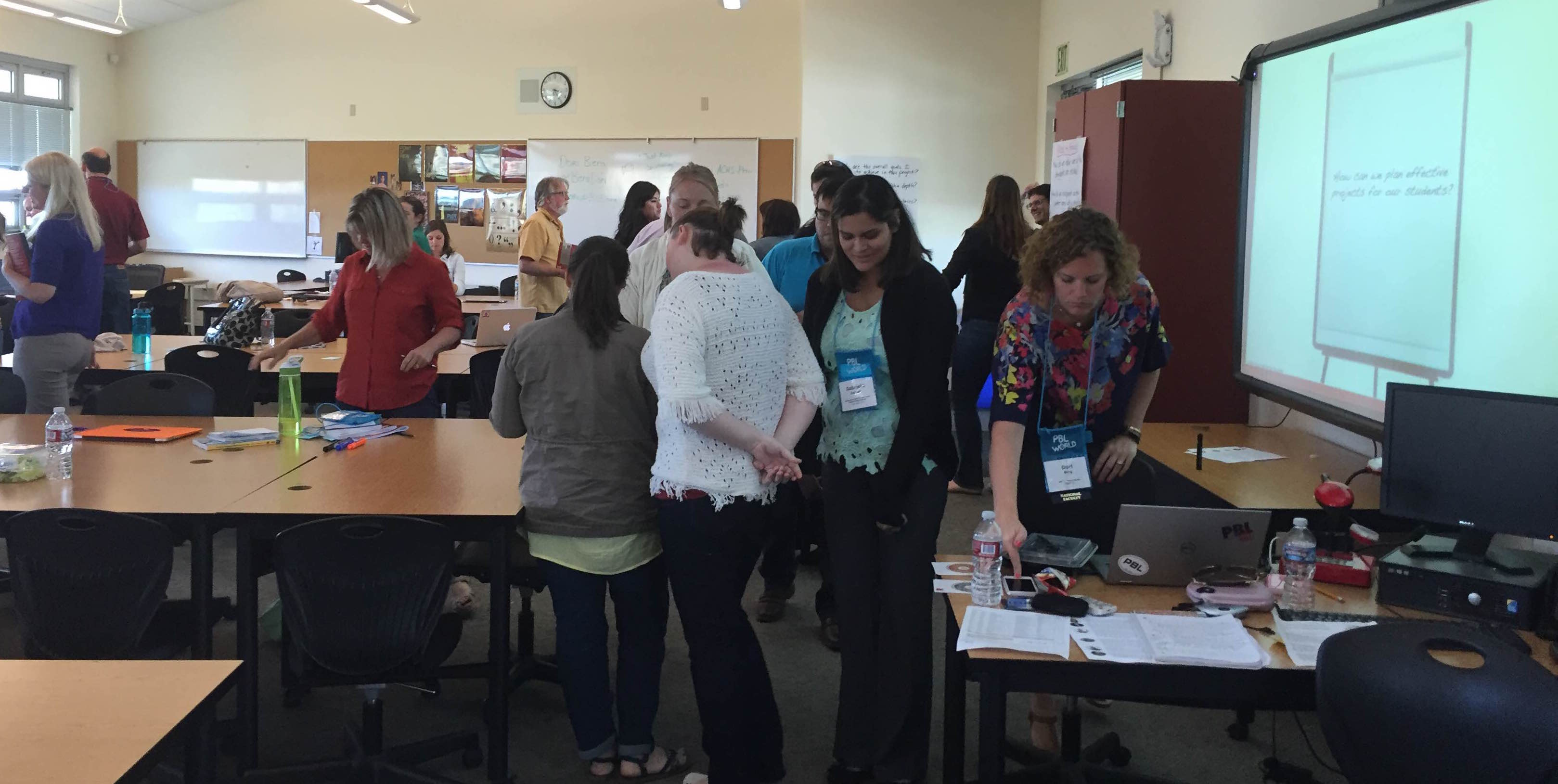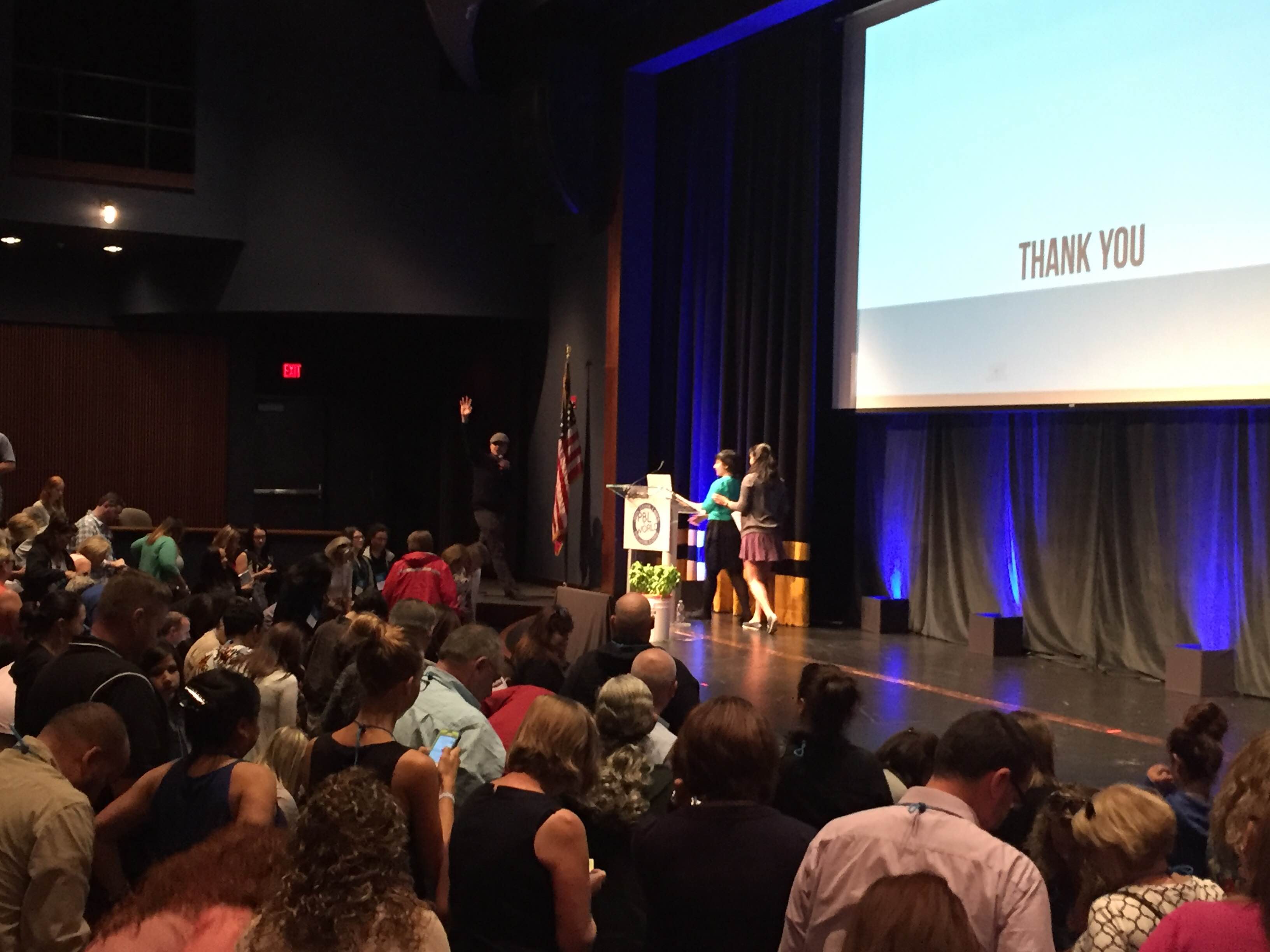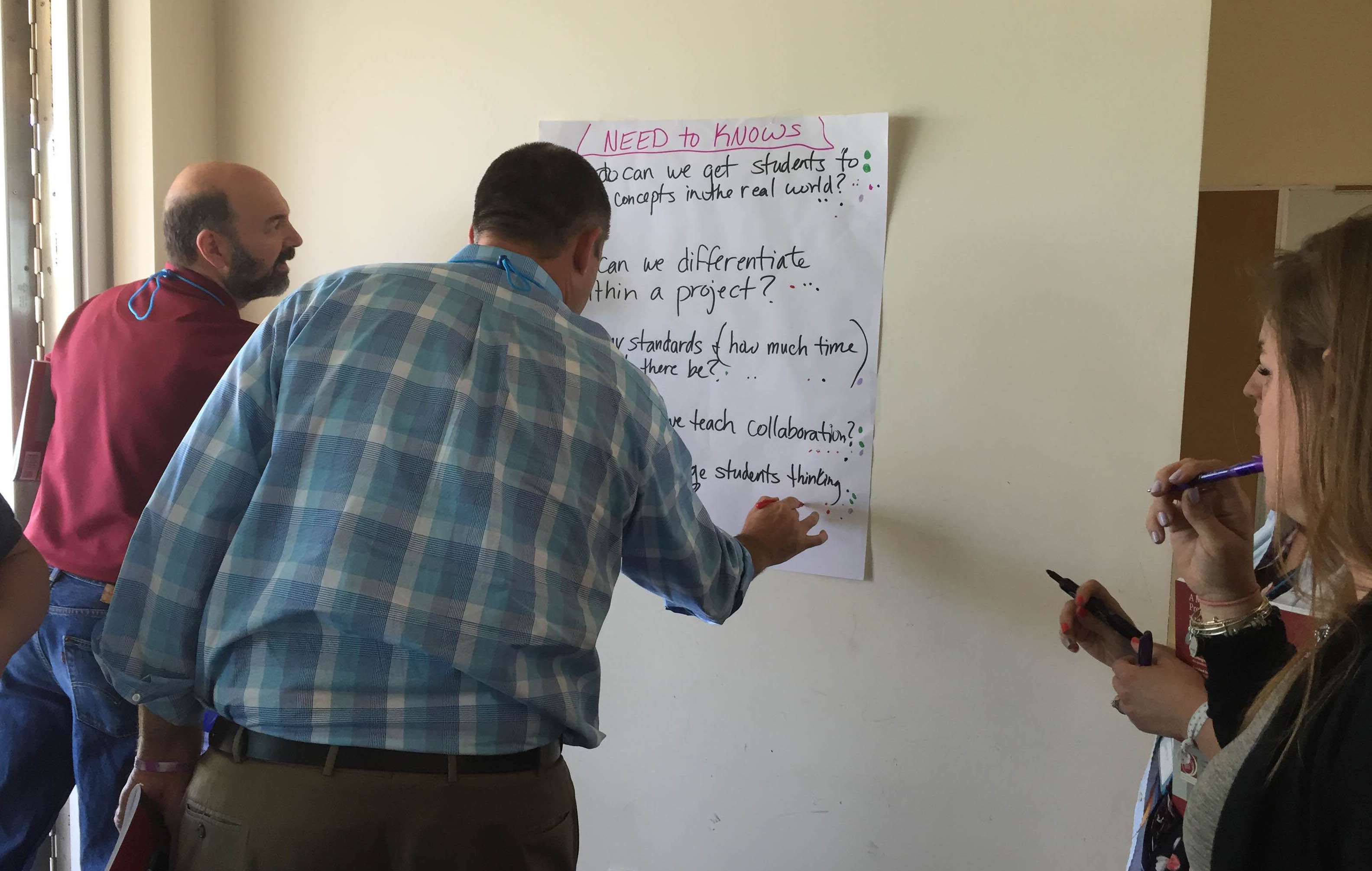
PBL World attendees collaborate during the PBL 101 workshop.
As educators, we have many tools in our toolbox to help students learn, and own their learning. Project-based learning, or PBL, is one that I’ve employed on many occasions to encourage students to think critically and master content knowledge and skills with an authentic purpose.
Last week, I attended PBL World, hosted by the Buck Institute for Education. I joined PBL 101, heard compelling keynote speakers, and collaborated with my colleagues in the Springpoint network to hone my skills as an educator and sharpen my PBL offerings for students.
My school, International High School at Langley Park, has a deep-rooted belief in the effectiveness of PBL. My fellow teachers and I are constantly collaborating to create projects that help our students, all of whom are English Language Learners (ELL).

PBL is a great way to engage our students, each of whom are at different levels of mastery of the English language and their other subjects. The PBL process exposes students to the exercise of answering real world questions and solving real world problems. Students are prompted with a driving question, which leads them to investigate thoroughly and conduct meaningful research. There are three conditions I’ve used to make PBL stick for my students:
Clear shared purpose
When students are around people who share a common purpose, they can create anything as long as they put all their great ideas together collaboratively. To support them in their projects, I provide a clear shared purpose. Throughout the process of creating their project, students are not working alone with no clear direction. Rather, they are co-creators of a shared vision.
To foster a clear shared purpose, I pose an essential question to activate students’ curiosity like, “How do engineers build a highly effective catapult?”. My students also generate their own questions on how to achieve their objective/essential question. For example, the could ask themselves and each other, “What is a catapult?” “How do I make a catapult?” “Can I check the internet to get help?” “What are the steps in making one?” This helps them to own their learning and become even more invested in their projects.
Another way that I convey the power of shared purpose is by outlining the objectives that students need to meet in order to be successful. For example, I learned that when I assign a project on making a rocket ship using PVC pipes and soda bottles, I need to provide students with clear objectives and expectations on how to complete the project. It’s crucial to be clear about what they need to do as a member of the team or as a group and what they need to do get a particular grade.
Culture of collaboration
Collaboration plays a vital role in the success of a PBL project. It leverages the diversity of each student to accomplish essential tasks toward mastery in each subject. Often, students team up with fellow students who have differing levels of English language skills. Every member of the team has a specific role to play while working together to achieve their common goal.
At PBL World, I learned that in order to promote a culture of collaboration, I should utilize a rubric that includes these expectations to let students know how they’re going to be graded. I can provide said rubric to them before, during and after the activity as a reminder of how they’re going to be graded. I also saw the importance of teachers modeling the real meaning of collaboration before expecting students to participate fully.
Students in my class are active listeners and active members of their teams. They are willing to share ideas and are open to change or constructive criticism. If students know they’re in a safe environment and feel comfortable with their peers, then they will enjoy working on projects together. They will want to be part of something, to belong, to influence, to engage.
Transparency
Dedication to a system of transparency in the classroom helps students create a clear-shared purpose. It also helps give them a voice and choice where they make decisions about their project, including the ways in which they will work and what will they create.
It’s then essential that I, as the adult guiding their learning, sit with students to give feedback. Feedback should be helpful, specific, and kind. The students can then use the feedback they receive to improve their process and product.
At PBL World, I learned that teachers should be transparent in their process by opening their room for fellow staff members to observe various types of PBL, inviting feedback questions. Also, teachers who use PBL make should make their lessons public and invite people from the community, business organizations and politicians to witness the work of students. These stakeholders can provide good suggestions and feedback allowing students to make adjustments to their project if necessary, and get ideas for future learning. The public audience can also talk about their job and how they use projects in their professional life. Tuning protocol works well for teachers who are implementing project-based learning, providing them with feedback that helps us constantly improve our practice in the classroom and provides deep and supportive learning environments for students.

Attendees work together during a session at PBL World to share their ideas and expertise.
Students are tired of the traditional classroom teaching—lectures for hours, long tests, and projects that come only after the end of a unit. These things do not make learning fun, and all too often, they don’t make learning stick. Students remember best when they apply their coursework to the real world.
When I was a student, I experienced these types of boring lectures and projects. Math, for me, is most interesting when applied outside of the classroom. That’s why I use PBL for my students.
PBL also allows me to provide a high level of rigor, and lets students to use math to experience the world around them. It exposes students to the issues their community faces and will ultimately ignite their curiosity to find solutions. They will develop crucial skills like critical thinking, collaboration, and analysis to help them prepare for college and career. PBL is not only to transfer knowledge, but the transformation of knowledge.
Arnold Somera is a founding 9th grade teacher/math success coach at the International High School at Langley Park in Prince George’s County, Maryland. IHS Langley Park is a mastery-based high school that opened in summer 2015 with generous funding from Carnegie Corporation of New York and support from Springpoint and the Internationals Network for Public Schools.